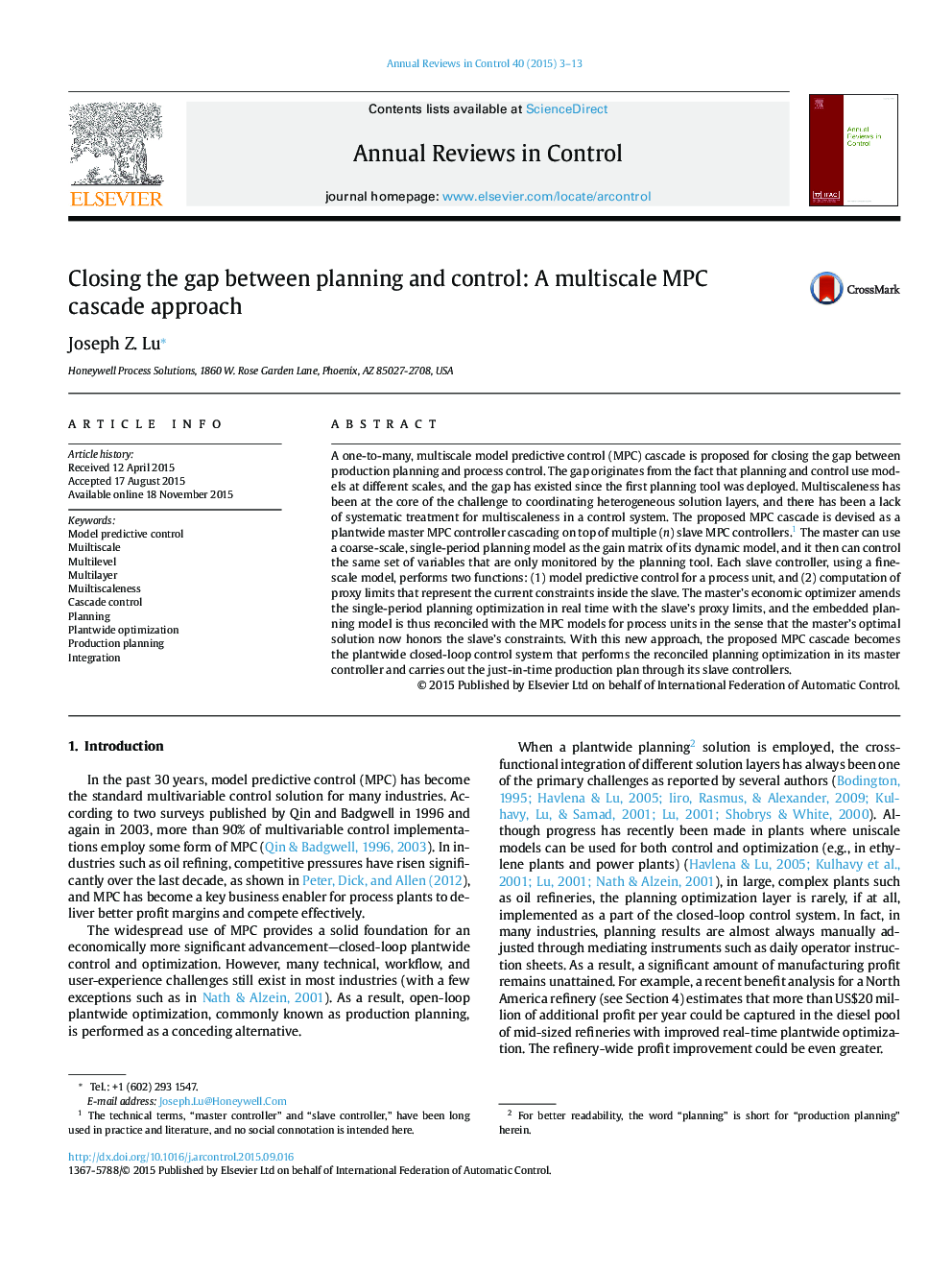| Article ID | Journal | Published Year | Pages | File Type |
|---|---|---|---|---|
| 7107960 | Annual Reviews in Control | 2015 | 11 Pages |
Abstract
A one-to-many, multiscale model predictive control (MPC) cascade is proposed for closing the gap between production planning and process control. The gap originates from the fact that planning and control use models at different scales, and the gap has existed since the first planning tool was deployed. Multiscaleness has been at the core of the challenge to coordinating heterogeneous solution layers, and there has been a lack of systematic treatment for multiscaleness in a control system. The proposed MPC cascade is devised as a plantwide master MPC controller cascading on top of multiple (n) slave MPC controllers.1 The master can use a coarse-scale, single-period planning model as the gain matrix of its dynamic model, and it then can control the same set of variables that are only monitored by the planning tool. Each slave controller, using a fine-scale model, performs two functions: (1) model predictive control for a process unit, and (2) computation of proxy limits that represent the current constraints inside the slave. The master's economic optimizer amends the single-period planning optimization in real time with the slave's proxy limits, and the embedded planning model is thus reconciled with the MPC models for process units in the sense that the master's optimal solution now honors the slave's constraints. With this new approach, the proposed MPC cascade becomes the plantwide closed-loop control system that performs the reconciled planning optimization in its master controller and carries out the just-in-time production plan through its slave controllers.
Keywords
Related Topics
Physical Sciences and Engineering
Engineering
Control and Systems Engineering
Authors
Joseph Z. Lu,
